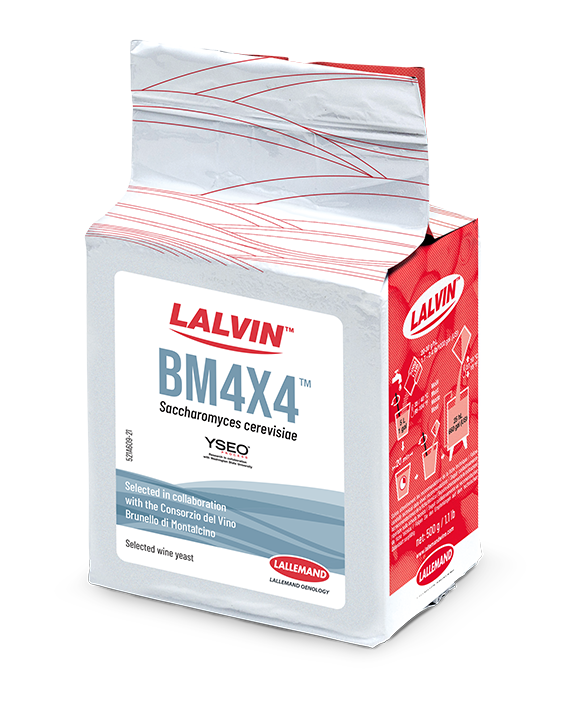
LALVIN BM4x4™
(Saccharomyces cerevisiae cerevisiae)
The attributes of LALVIN BM45™ with optimised fermentation capacity
Product details
LALVIN BM4X4™ is a blend of LALVIN BM45™ and another yeast known for its fermentation reliability. LALVIN BM45™ is known and appreciated around the world for its round mouthfeel and stable color (see above description for LALVIN BM45™). However, LALVIN BM45™ is a slow fermenter and can require substantial nutrients to complete fermentation successfully and without the production of sulfides. While LALVIN BM45™ has a very strong following among winemakers who enjoy its slow fermentation and its suitability for long maceration programs, there are others who desire the attributes of LALVIN BM45™ but with a more timely and secure fermentation. LALVIN BM4x4™ achieves this goal. During the yeast growth phase, LALVIN BM4x4™ has the unusual capacity of releasing a significant quantity of polyphenol-reactive polysaccharides into the fermenting must. The quantity and the quality of the polysaccharides released during fermentation facilitate the production of red wines with great mouthfeel and improved color stability, with dependable fermentation kinetics under difficult fermentation conditions. In whites, LALVIN BM4x4™ releases a high level of esters responsible for fruit aromas and also brings roundness to the mouthfeel.
Selected by the Consorzio del Vino Brunello de Montalcino and the University of Siena, Italy
Wine types
Technical information
- General sensory contribution: Varietal
- Competitive factor: Active
- Minimum temperature: 16 °C
- Maximum temperature: 28 °C
- Nutritional needs: High
- MLF compatibility: Not really recommended
- SO2production: Moderate
- Fermentation rate: Moderate
- Alcohol tolerance: 16 %
- Glycerol production: No info
